Travelers 2014 Annual Report Download - page 159
Download and view the complete annual report
Please find page 159 of the 2014 Travelers annual report below. You can navigate through the pages in the report by either clicking on the pages listed below, or by using the keyword search tool below to find specific information within the annual report.-
 1
1 -
 2
2 -
 3
3 -
 4
4 -
 5
5 -
 6
6 -
 7
7 -
 8
8 -
 9
9 -
 10
10 -
 11
11 -
 12
12 -
 13
13 -
 14
14 -
 15
15 -
 16
16 -
 17
17 -
 18
18 -
 19
19 -
 20
20 -
 21
21 -
 22
22 -
 23
23 -
 24
24 -
 25
25 -
 26
26 -
 27
27 -
 28
28 -
 29
29 -
 30
30 -
 31
31 -
 32
32 -
 33
33 -
 34
34 -
 35
35 -
 36
36 -
 37
37 -
 38
38 -
 39
39 -
 40
40 -
 41
41 -
 42
42 -
 43
43 -
 44
44 -
 45
45 -
 46
46 -
 47
47 -
 48
48 -
 49
49 -
 50
50 -
 51
51 -
 52
52 -
 53
53 -
 54
54 -
 55
55 -
 56
56 -
 57
57 -
 58
58 -
 59
59 -
 60
60 -
 61
61 -
 62
62 -
 63
63 -
 64
64 -
 65
65 -
 66
66 -
 67
67 -
 68
68 -
 69
69 -
 70
70 -
 71
71 -
 72
72 -
 73
73 -
 74
74 -
 75
75 -
 76
76 -
 77
77 -
 78
78 -
 79
79 -
 80
80 -
 81
81 -
 82
82 -
 83
83 -
 84
84 -
 85
85 -
 86
86 -
 87
87 -
 88
88 -
 89
89 -
 90
90 -
 91
91 -
 92
92 -
 93
93 -
 94
94 -
 95
95 -
 96
96 -
 97
97 -
 98
98 -
 99
99 -
 100
100 -
 101
101 -
 102
102 -
 103
103 -
 104
104 -
 105
105 -
 106
106 -
 107
107 -
 108
108 -
 109
109 -
 110
110 -
 111
111 -
 112
112 -
 113
113 -
 114
114 -
 115
115 -
 116
116 -
 117
117 -
 118
118 -
 119
119 -
 120
120 -
 121
121 -
 122
122 -
 123
123 -
 124
124 -
 125
125 -
 126
126 -
 127
127 -
 128
128 -
 129
129 -
 130
130 -
 131
131 -
 132
132 -
 133
133 -
 134
134 -
 135
135 -
 136
136 -
 137
137 -
 138
138 -
 139
139 -
 140
140 -
 141
141 -
 142
142 -
 143
143 -
 144
144 -
 145
145 -
 146
146 -
 147
147 -
 148
148 -
 149
149 -
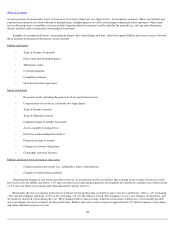 150
150 -
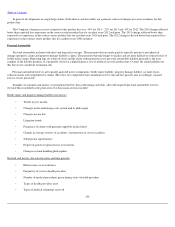 151
151 -
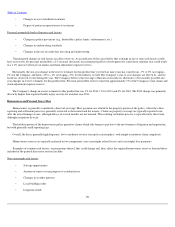 152
152 -
 153
153 -
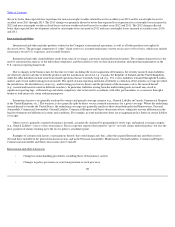 154
154 -
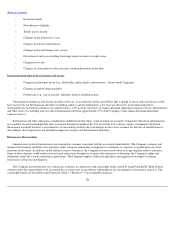 155
155 -
 156
156 -
 157
157 -
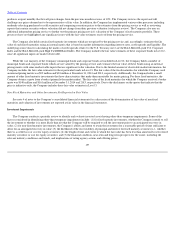 158
158 -
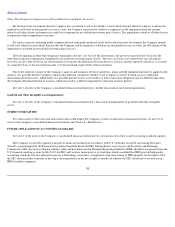 159
159 -
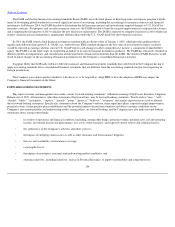 160
160 -
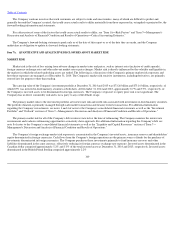 161
161 -
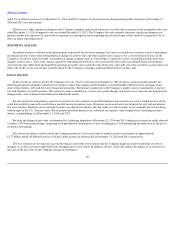 162
162 -
 163
163 -
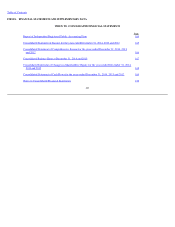 164
164 -
 165
165 -
 166
166 -
 167
167 -
 168
168 -
 169
169 -
 170
170 -
 171
171 -
 172
172 -
 173
173 -
 174
174 -
 175
175 -
 176
176 -
 177
177 -
 178
178 -
 179
179 -
 180
180 -
 181
181 -
 182
182 -
 183
183 -
 184
184 -
 185
185 -
 186
186 -
 187
187 -
 188
188 -
 189
189 -
 190
190 -
 191
191 -
 192
192 -
 193
193 -
 194
194 -
 195
195 -
 196
196 -
 197
197 -
 198
198 -
 199
199 -
 200
200 -
 201
201 -
 202
202 -
 203
203 -
 204
204 -
 205
205 -
 206
206 -
 207
207 -
 208
208 -
 209
209 -
 210
210 -
 211
211 -
 212
212 -
 213
213 -
 214
214 -
 215
215 -
 216
216 -
 217
217 -
 218
218 -
 219
219 -
 220
220 -
 221
221 -
 222
222 -
 223
223 -
 224
224 -
 225
225 -
 226
226 -
 227
227 -
 228
228 -
 229
229 -
 230
230 -
 231
231 -
 232
232 -
 233
233 -
 234
234 -
 235
235 -
 236
236 -
 237
237 -
 238
238 -
 239
239 -
 240
240 -
 241
241 -
 242
242 -
 243
243 -
 244
244 -
 245
245 -
 246
246 -
 247
247 -
 248
248 -
 249
249 -
 250
250 -
 251
251 -
 252
252 -
 253
253 -
 254
254 -
 255
255 -
 256
256 -
 257
257 -
 258
258 -
 259
259 -
 260
260 -
 261
261 -
 262
262 -
 263
263 -
 264
264 -
 265
265 -
 266
266 -
 267
267 -
 268
268 -
 269
269 -
 270
270 -
 271
271 -
 272
272 -
 273
273 -
 274
274 -
 275
275 -
 276
276 -
 277
277 -
 278
278 -
 279
279 -
 280
280 -
 281
281 -
 282
282 -
 283
283 -
 284
284 -
 285
285 -
 286
286 -
 287
287 -
 288
288 -
 289
289 -
 290
290 -
 291
291 -
 292
292 -
 293
293 -
 294
294 -
 295
295 -
 296
296 -
 297
297 -
 298
298 -
 299
299 -
 300
300 -
 301
301 -
 302
302 -
 303
303 -
 304
304 -
 305
305 -
 306
306 -
 307
307 -
 308
308 -
 309
309 -
 310
310 -
 311
311 -
 312
312 -
 313
313 -
 314
314 -
 315
315 -
 316
316 -
 317
317 -
 318
318 -
 319
319 -
 320
320 -
 321
321 -
 322
322 -
 323
323 -
 324
324 -
 325
325 -
 326
326 -
 327
327 -
 328
328 -
 329
329 -
 330
330 -
 331
331 -
 332
332 -
 333
333 -
 334
334 -
 335
335 -
 336
336 -
 337
337 -
 338
338 -
 339
339 -
 340
340 -
 341
341 -
 342
342 -
 343
343 -
 344
344 -
 345
345 -
 346
346 -
 347
347 -
 348
348 -
 349
349 -
 350
350 -
 351
351 -
 352
352 -
 353
353 -
 354
354 -
 355
355 -
 356
356 -
 357
357 -
 358
358 -
 359
359 -
 360
360 -
 361
361 -
 362
362 -
 363
363 -
 364
364 -
 365
365 -
 366
366
 |
 |

Table of Contents
Other
-
Than
-
Temporary Impairments of Fixed Maturities and Equity Securities
For fixed maturity investments that the Company does not intend to sell or for which it is more likely than not that the Company would not be
required to sell before an anticipated recovery in value, the Company separates the credit loss component of the impairment from the amount
related to all other factors and reports the credit loss component in net realized investment gains (losses). The impairment related to all other factors
is reported in other comprehensive income.
For equity securities (including public common and non
-
redeemable preferred stock) and for fixed maturity investments the Company intends
to sell or for which it is more likely than not that the Company will be required to sell before an anticipated recovery in value, the full amount of the
impairment is included in net realized investment gains (losses).
Upon recognizing an other
-
than
-
temporary impairment, the new cost basis of the investment is the previous amortized cost basis less the
other
-
than
-
temporary impairment recognized in net realized investment gains (losses). The new cost basis is not adjusted for any subsequent
recoveries in fair value; however, for fixed maturity investments the difference between the new cost basis and the expected cash flows is accreted
on a quarterly basis to net investment income over the remaining expected life of the investment.
Due to the subjective nature of the Company's analysis and estimates of future cash flows, along with the judgment that must be applied in the
analysis, it is possible that the Company could reach a different conclusion whether or not to impair a security if it had access to additional
information about the issuer. Additionally, it is possible that the issuer's actual ability to meet contractual obligations may be different than what
the Company determined during its analysis, which may lead to a different impairment conclusion in future periods.
See note 1 of notes to the Company's consolidated financial statements for a further discussion of investment impairments.
Goodwill and Other Intangible Assets Impairments
See note 1 of notes to the Company's consolidated financial statements for a discussion of impairments of goodwill and other intangible
assets.
OTHER UNCERTAINTIES
For a discussion of other risks and uncertainties that could impact the Company's results of operations or financial position, see note 16 of
notes to the Company's consolidated financial statements and "Item 1A—Risk Factors."
FUTURE APPLICATION OF ACCOUNTING STANDARDS
See note 1 of the notes to the Company's consolidated financial statements for a discussion of recently issued accounting standards updates.
The Company is currently required to prepare its financial statements in accordance with U.S. Generally Accepted Accounting Principles
(GAAP), as promulgated by the Financial Accounting Standards Board (FASB). During the last several years, the Securities and Exchange
Commission (SEC) has been evaluating whether, when and how International Financial Reporting Standards (IFRS) should be incorporated into the
U.S. financial reporting system. In July 2012, the SEC staff issued a final report on its work plan which concluded that IFRS provide high quality
accounting standards, but also indicated concerns with funding, consistency of application and enforcement of IFRS globally. In November 2014,
the SEC announced that it intends to develop a recommendation in the next couple of months on whether the SEC should move towards using
IFRS for public companies.
158
